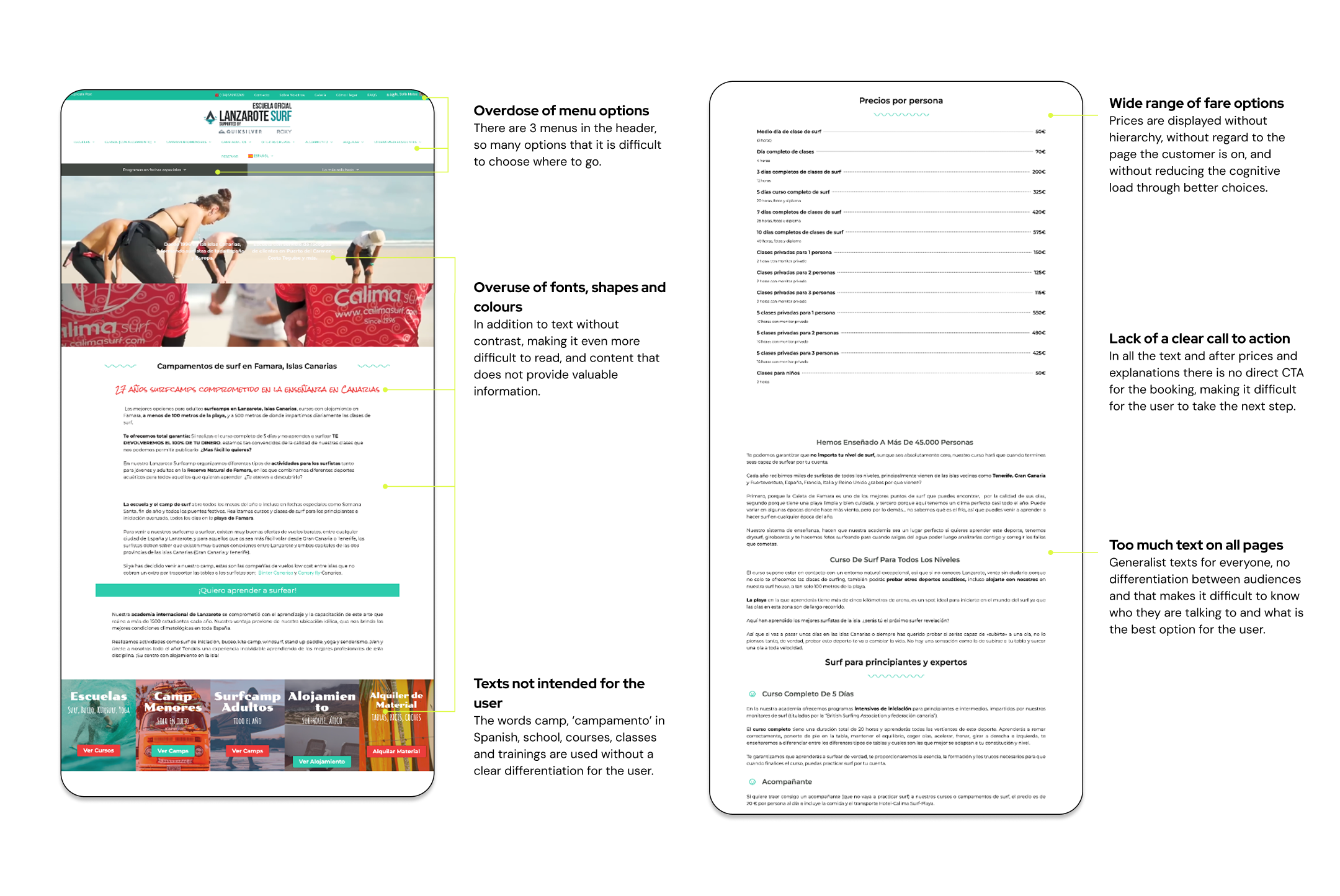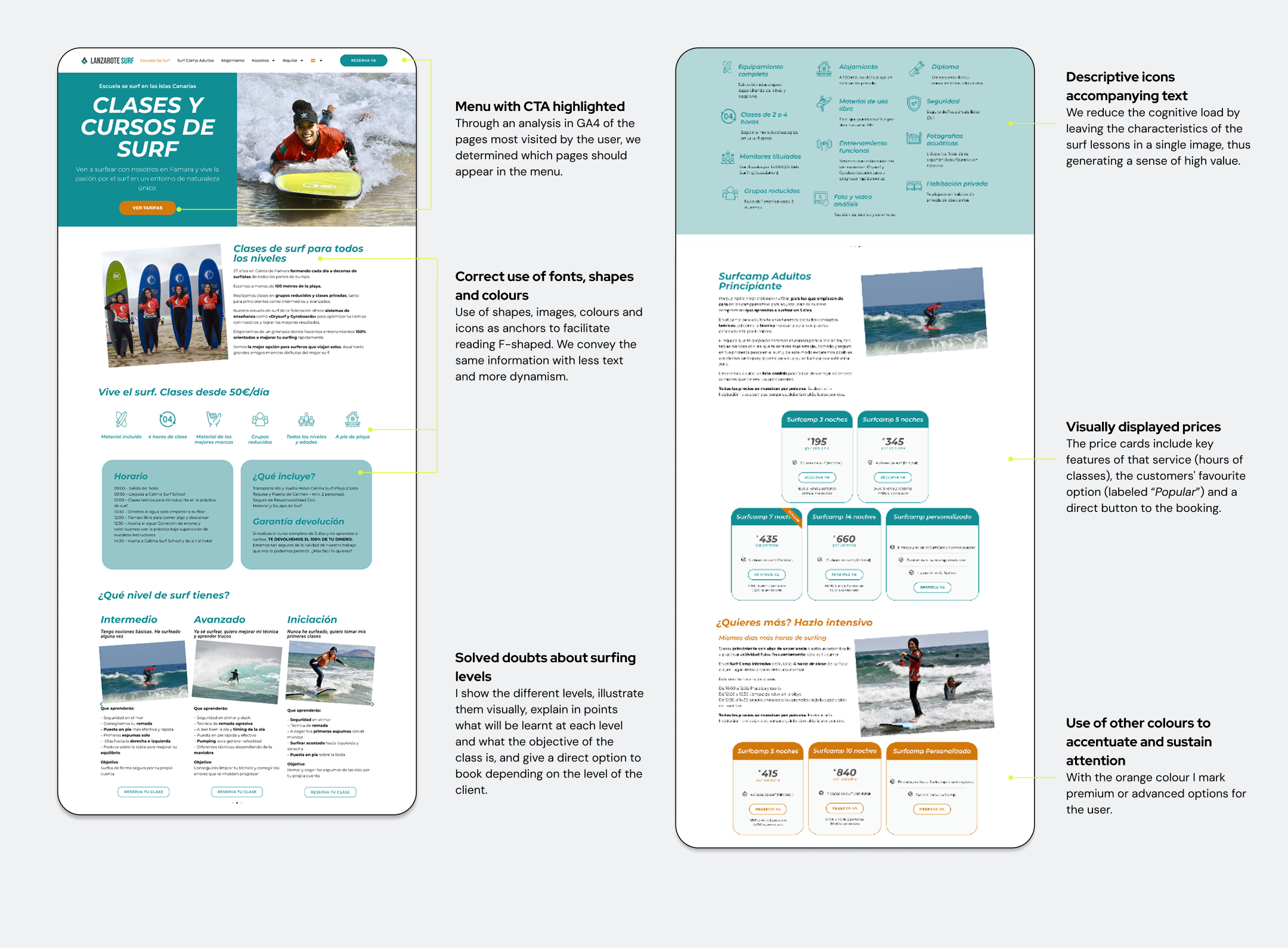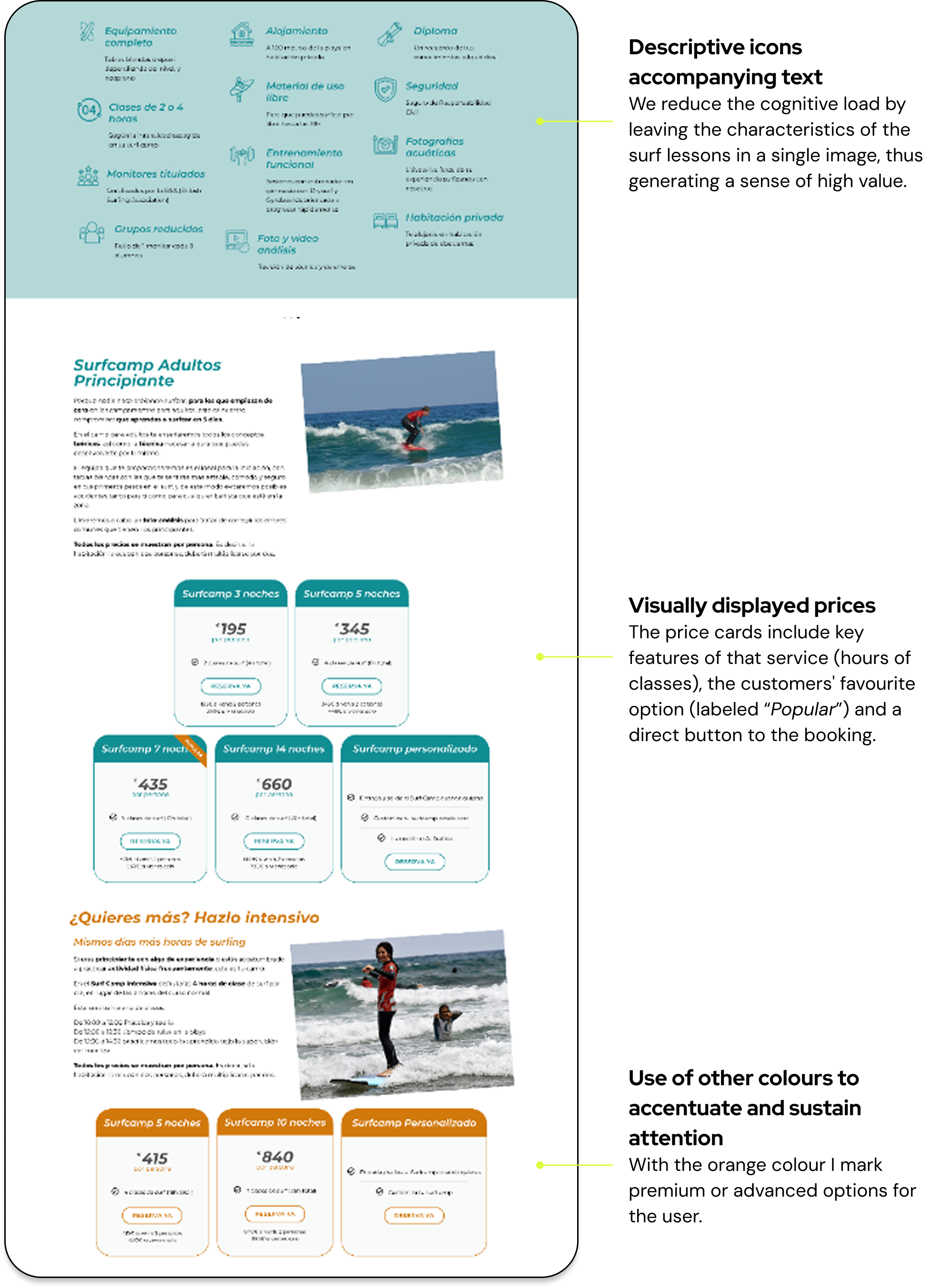I redesigned the site to reduce cognitive overload, simplify booking paths, and make it mobile-friendly — resulting in +727% mobile engagement and +361% desktop interaction. Start scrolling for the story.
Lanzarote Surf, one of the most recognized surf schools in the Canary Islands, struggled with a cluttered, overwhelming website.
– navigating the site,
– understanding available courses,
– and completing bookings.
The website contained excessive text, inconsistent branding, and lacked a streamlined user flow.
UX/UI designer & Web dev.
Figma, Miro, Google Analytics, Hotjar, WordPress
Oct 2024 – Jan 2025 (14 weeks)
Despite the amount of information available on the original website, users were still struggling to find clarity. I conducted user interviews to uncover behavioral patterns, decision blockers, and unmet informational needs.
During interviews, we found that users still had very basic questions not addressed on the site — like how to identify their surf level in order to choose the right course. This lack of clarity often led to frustration or hesitation, causing potential customers to drop off before reaching the booking step.
Simplified offerings to highlight the most popular plans.
I moved that information to the footer via FAQs and optimised it for SEO.
I used dropdowns, carousels and iconography to facilitate reading.
Added a comparison table to help them self-assess before booking.
Decided to made them bold, consistent, and action-driven.
Adjusted messaging to encourage individual sign-ups.
To understand how the original website was performing and where users were engaging (or dropping off), I conducted a multi-source research process combining:
Hotjar: to analyze heatmaps and scroll depth, identifying where users lost interest or missed key actions.
Semrush: to audit search visibility, keyword positioning, and competitor presence across surf-related queries.
People were interested — but something in the experience was blocking them from booking.
While most users came from mobile, only 8% reached product pages, compared to 13% on desktop.
50% of all bookings were for 1 person, and for a half-day single session. I repositioned this option to reduce choice overload.
I reorganized the menu based on real entry points and hid content that didn’t lead to conversion.
Pages like “Camps” and “Classes” had strong engagement. Others like “Gallery”, “About Us”, or “Blog” received less than 1% of visits.
I placed a clear CTA at the top of each page, reduced page length, and minimized the number of clicks needed to make a decision.

To understand how users interacted with the website, I created a customer journey map that revealed key pain points:
Key solutions implemented:

















Post-launch impact: Optimized for mobile-first growth.


The client has been recommended to continue to monitor the website in Google Analytics, with heat maps and user interviews. In addition, the number of customers accessing through direct CTAs to the booking is being measured.
With this information, advertising actions can be proposed in Google and Meta Ads to attract specific and interest-targeted customers to each of the pages.
It is also proposed to encourage the use and application of a Live Chat bot to resolve doubts within the platform and thus reduce the number of emails and WhatsApp messages received by the customer.
The design must remain alive. This design has been presented based on the results of the previous study, but I am convinced that it can be further optimised and A/B tests can be carried out to make new decisions and continue implementing improvements.

Onboarding redesign focused on increasing free to trial conversion, reducing drop-off, and enhancing perceived value. By incorporating personalisation, social proof, and interaction variety, the new flow aims to drive higher activation and subscription rates.